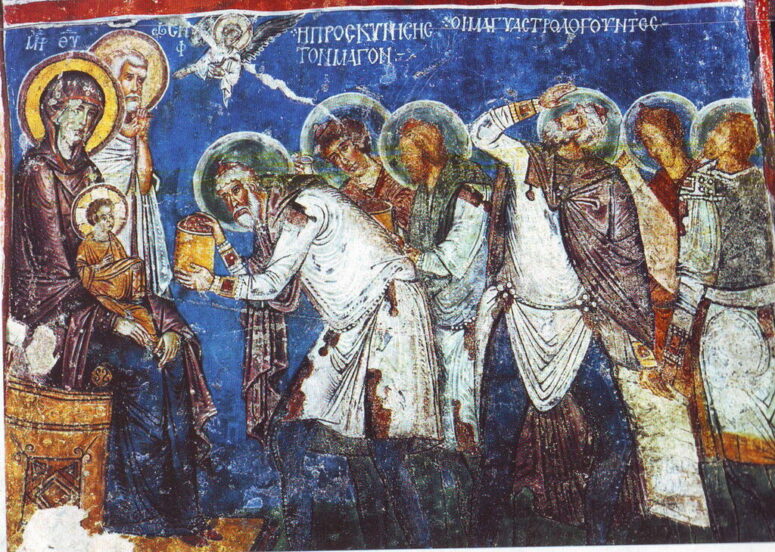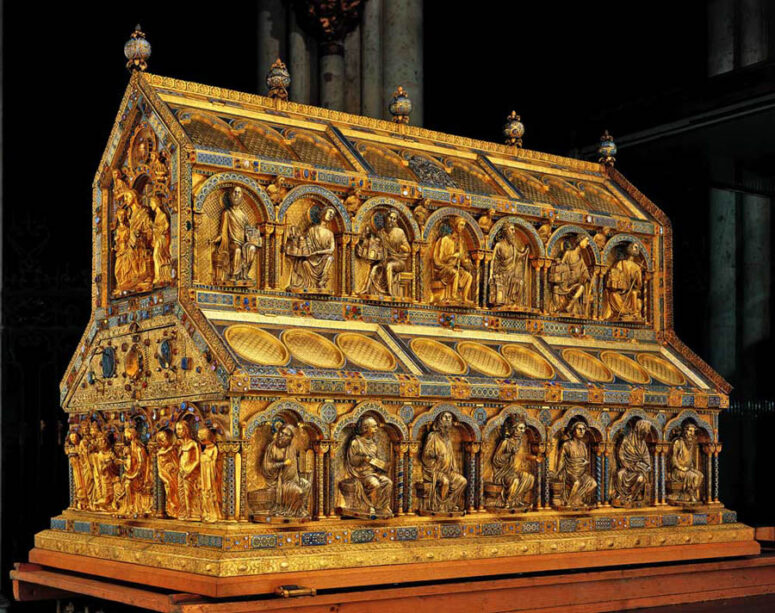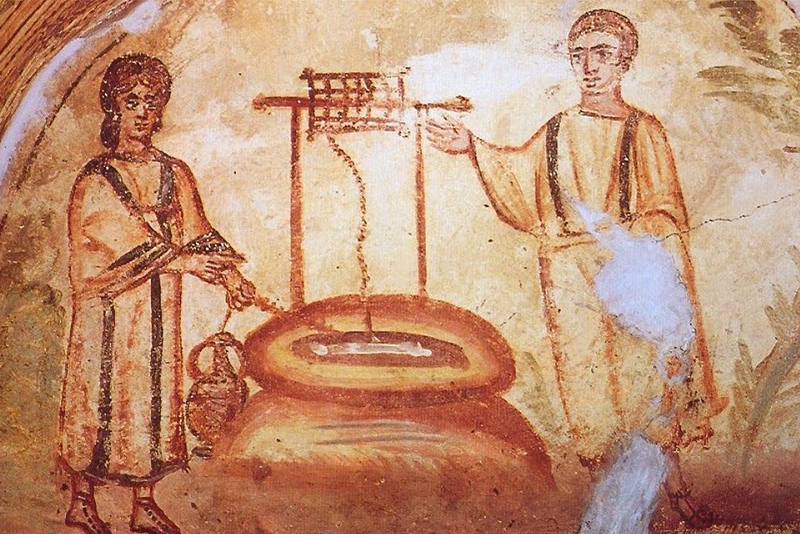
Despite the story of the Wise Men bringing their gifts to the Infant Christ being very popular, the bible contains but very limited information about them. Everything that we know about these people originated in early Christian literature and developed into its current form in the Middle Ages.
The Bible does not even mention their number. The widespread assumption of there being three wise men (attributed to Origen) is based on the number of their gifts to the Saviour. There are however many traditions indicating much larger numbers. For example, Armenians and Syrians believe that there were 12 wise men, arriving in Jerusalem with a large retinue.
In the Gospel, the wise men are denoted with the Greek word “μάγοι”, usually translated in the Latin tradition as “magi” (magicians). In ancient literature, there are two meanings of this term, Zoroastrian priests of Persian origin and Babylonian astrologers forming a separate occupational group. The tradition of the Persian origin of the Magi is mainly contained in Byzantine iconography. European art either makes no mention of their ethnicity, or completely correlates it with the Arab or Byzantine East. Saint Gregory the Theologian considered the Magi to be Chaldean astrologers.
According to St Matthew, the wise men lived somewhere in the east. The fact that they were following the Star of Bethlehem for about five months, makes the Bible scholars believe that they may have lived in Babylon, Mesopotamia, or India.
The possibility of the emergence of an unusually bright star, leading the Magi to Jesus, is not only not entertained but also explained by researchers. For example, astronomer Johannes Kepler writes about the periodically appearing conjunction of Jupiter and Saturn in the constellation Pisces, synchronously approaching Mars and ultimately giving a bright celestial phenomenon.

Since the time of early Christianity, there have been various versions of the time when the Magi visited the infant Christ. According to the ancient Eastern legend, the adoration of the Magi took place after the meeting of Jesus Christ with Simeon the God-receiver and before the flight of the holy family to Egypt.
However, there are many other dates for this event. Justin Martyr writes that “Immediately after His birth, the wise men from Arabia came to worship Him, having come first to Herod, who then reigned in your land” (Dialogue with Trypho, 77). According to St John Chrysostom, the star appeared to the Magi before the birth of Christ. “The Magi did not come to the Mother during childbirth, nor did they know the time when She gave birth. They had no reason therefore to make any conclusions about the future based on the course of the stars. On the contrary, seeing a star that appeared in their land long before Christ’s birth, they went to look at the One who was born ”(St John Chrysostom. Interpretation of St Matthew the Evangelist, 63). Other ancient authors, such as Eusebius Pamphili (Ecclesiastical History, Book 1, Chapter 8), believe that the worship of the Magi took place approximately in the second year after Christ’s birth.
Because the names of the Magi were not mentioned in the Bible, it is impossible to tell exactly what they were. According to the most popular version, originating from the ecclesiastical and apocryphal traditions of the medieval West, they were named Gaspar, Melchior and Balthasar. In particular, these are the names on the Ravenna mosaic in Sant’Apollinare Nuovo. They appear for the first time in the writings of the Benedictine monk Bede the Venerable (about the 6th century).
Early Christian literature offers several other versions, according to which the wise men’s names were Abimelech, Ahuzzath and Phichol (Origen); Hormizd, Yazgerd and Peroz (the Syrian tradition) etc. The Greek and Jewish traditions also have their own versions.
According to a theory by the Bishop Caesarius of Arles, the Magi were kings from the East. The idea of the Magi being kings became established in medieval Europe after the 9th century. Traditionally, it is believed that Melchior was the king of Arabia, Gaspar was the king of Tarsus and Balthasar was the king of Ethiopia.
With the development of the iconographic image of the Magi, they began to be depicted as representatives of three different age groups (Gaspar as a young man, Balthasar as a middle-aged man and Melchior as an elder). In the Age of Discovery, the Magi became symbols of three parts of the world (Europe, Africa, America) and three human races – white, black and Asian. This interpretation appears only in Modern History, whereas the Magi have always figuratively represented pagan world.
According to legend, the wise men were baptized by the Apostle Thomas and joined him in preaching the gospel. After years of righteous life, they accepted martyrdom in eastern countries. Their relics were found by Empress Helena, who brought them to Constantinople. In the 5th century, the relics of the Magi were transferred to Mediolanum (Milan), and in 1164, at the request of Frederick Barbarossa, to Cologne, where they are kept in a gilded three-part reliquary in the Cologne Cathedral.





